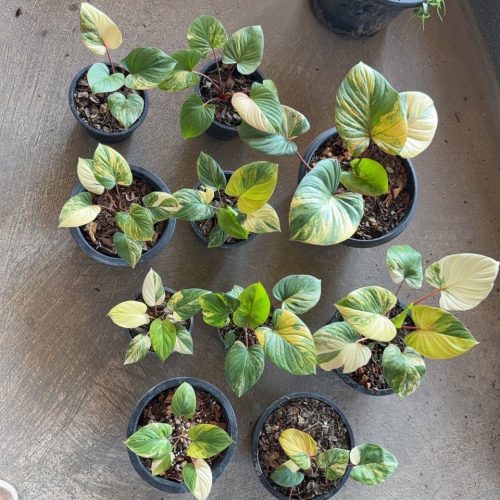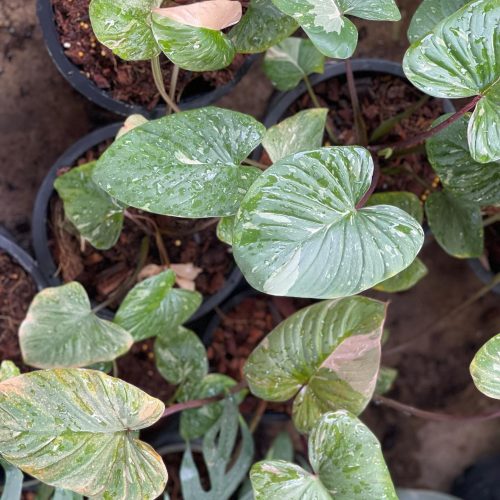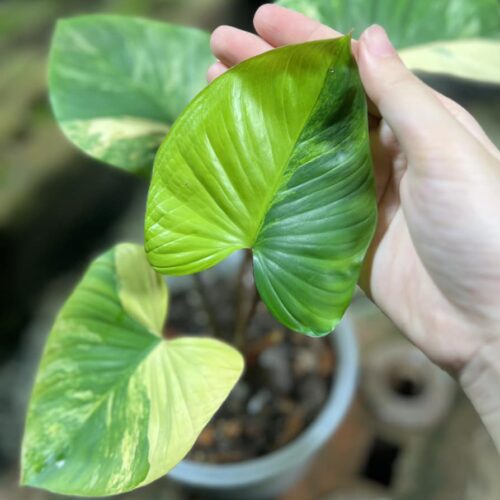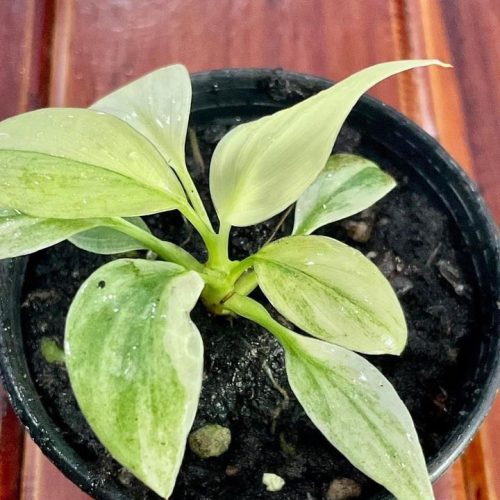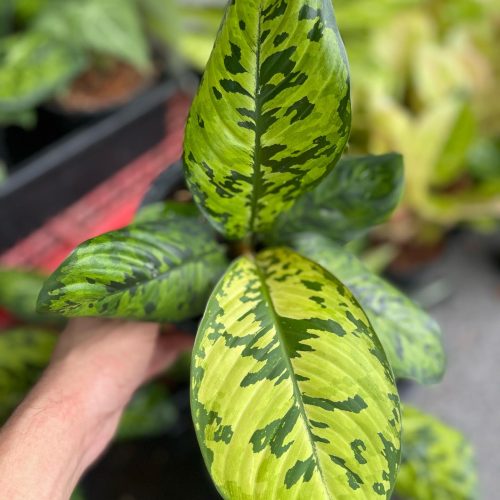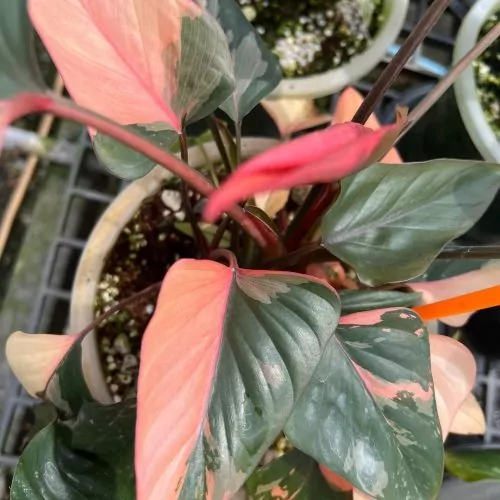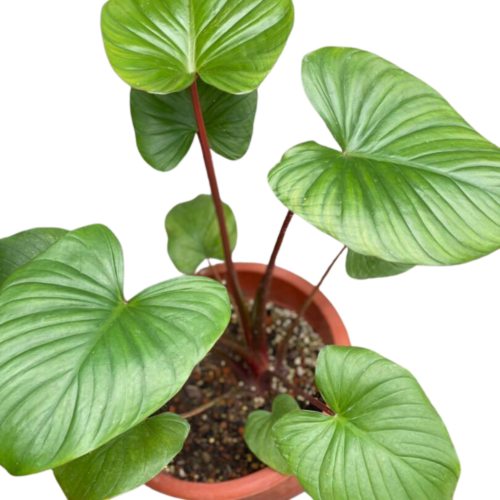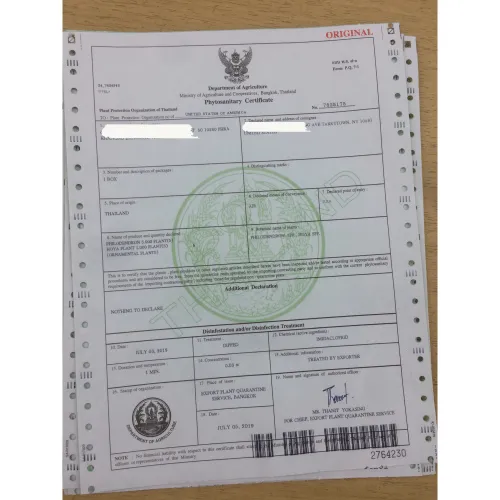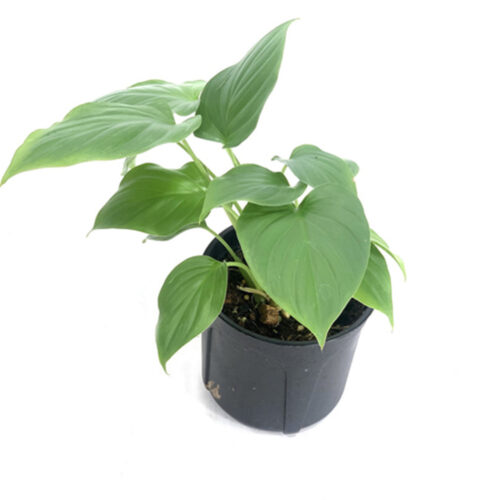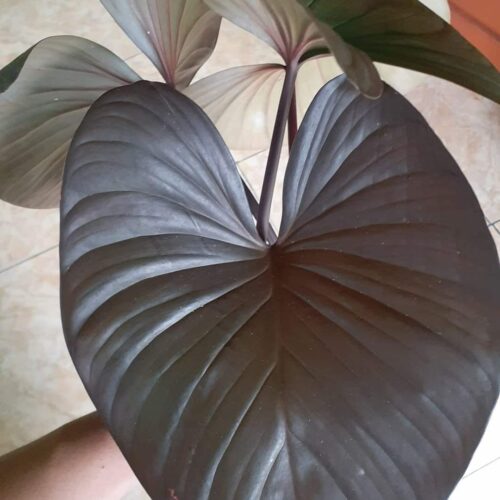The homalomena is a popular indoor plant that is loved for its attractive foliage and easy care requirements. When grown properly, homalomenas can reach mature sizes of 3-4 feet in height with leaves that are 4-8 inches long. In this blog post, we will explore the factors that influence homalomena growth and ultimate mature size.

Light Requirements
Homalomenas need bright, indirect light in order to thrive. They will tolerate some direct morning or late afternoon sun, but should be protected from intense midday light.
Sun Exposure
Getting the proper amount of sunlight is crucial for robust homalomena growth. A north or east facing window is often ideal, providing plenty of gentle light without risk of scorching the leaves. Insufficient light will result in weak, stunted growth.
Supplemental Lighting
During darker winter months, supplementing ambient light with grow lights or fluorescent bulbs can help sustain strong plant development year-round. LED grow lights placed 6-12 inches above the plant for 12-14 hours per day are recommended.
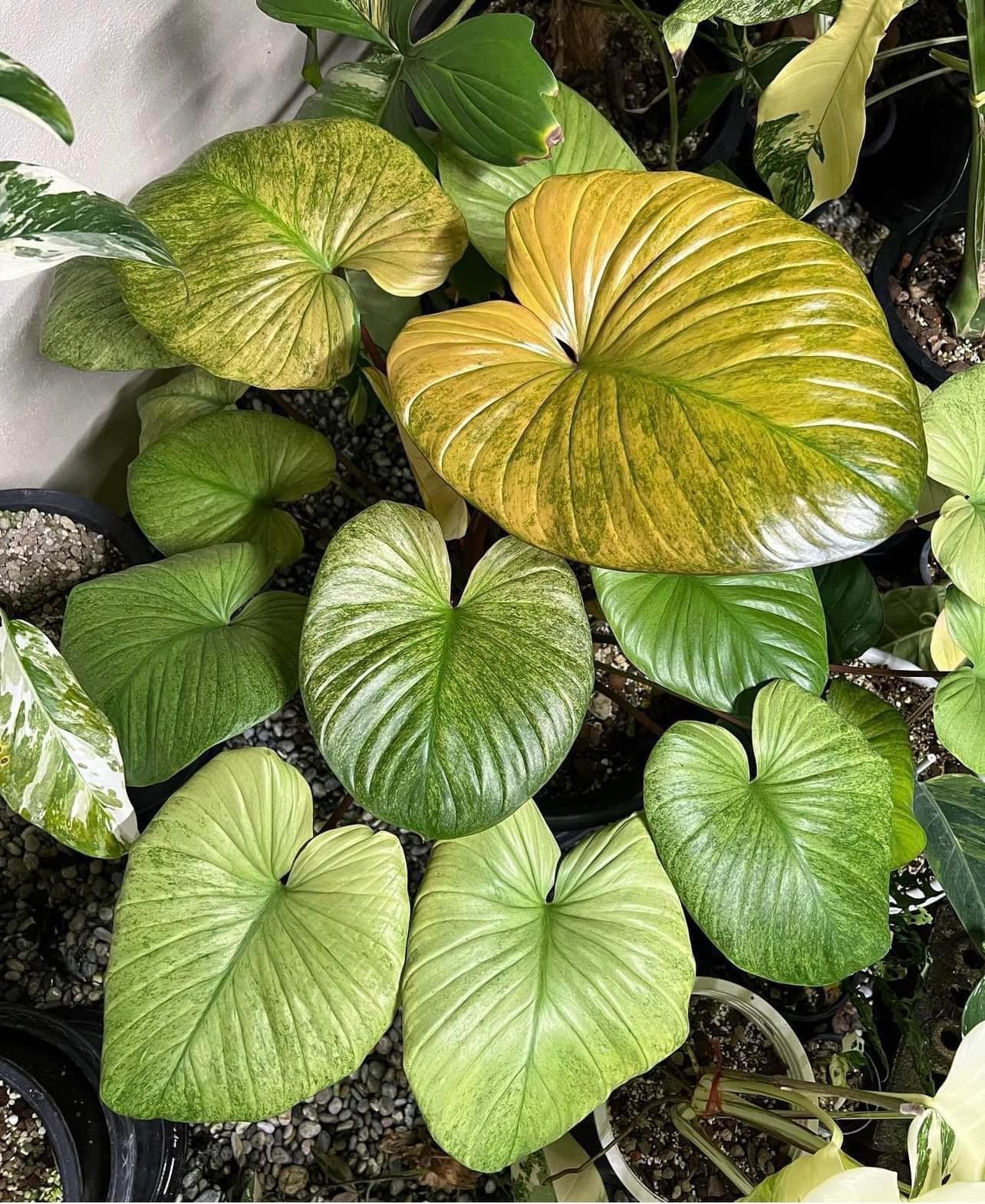
List of the most sought after Homalomena species in 2023
Soil and Pot Size
To reach full mature height and width, homalomenas need room for their root systems to expand. Choosing an appropriate pot and soil supports healthy, vigorous growth.
Pot Dimensions
Select a pot that is wider than it is tall, around 12-16 inches wide for standard varieties. This shape is better for homalomena root structures. Drainage holes are essential to prevent soggy soil.
Soil Mixes
Homalomenas thrive in a well-draining, nutrient-rich potting mix amended with perlite or bark to maintain airflow to the roots. Soilless mixes tend to work better than standard potting soil.
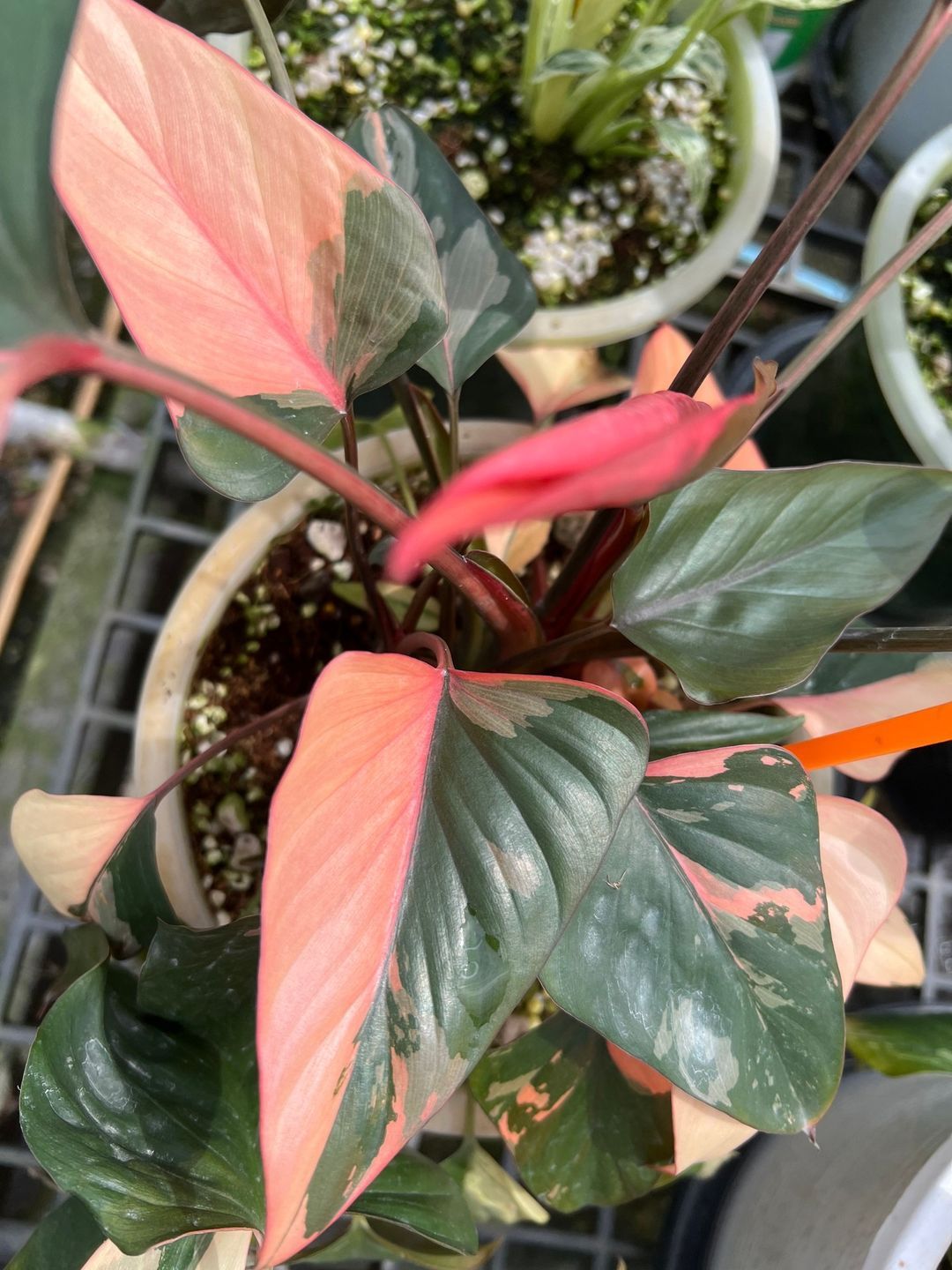
Water and Humidity
Homalomenas favor warm, humid tropical environments with frequent watering. Replicating these conditions as much as possible at home will maximize plant health and mature size.
Watering Frequency
Soil should be kept consistently moist but not saturated. During the active growing season, water whenever the top 1-2 inches become dry. Reduce water slightly in winter but do not allow pots to dry out fully.
Ambient Humidity
Average home humidity may not be sufficient for robust homalomena growth. Placing pots on pebble trays, using a humidifier, or grouping plants together can help raise humidity levels.
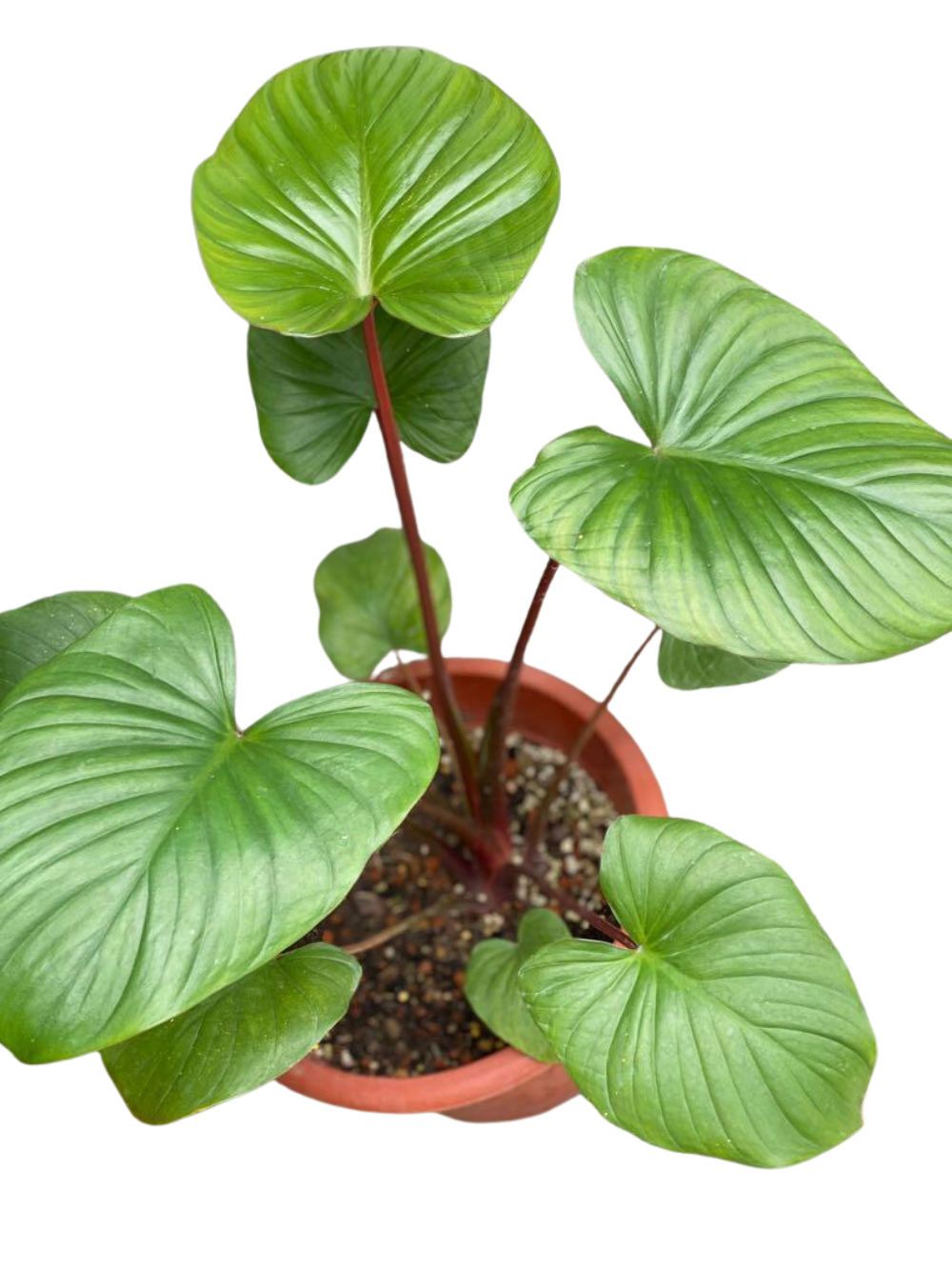
Fertilizer
Applying fertilizer at regular intervals during the growing season provides the nutrients homalomenas need to attain full mature proportions.
Type of Fertilizer
Choose a balanced liquid fertilizer like a diluted fish emulsion or all-purpose plant food. Slow release granular fertilizers are another great option.
Feeding Schedule
Fertilize every 2-3 weeks in spring and summer, tapering off in fall and winter. Carefully follow label dilution instructions to avoid fertilizer burn.
Pruning and Shaping
Judicious pruning and training techniques allow homalomenas to grow into more compact, bushy specimens if desired.
Pruning for Compact Growth
Removing the terminal bud after several sets of leaves forces stems to branch out instead of continuing vertical extension. This creates a fuller, denser plant.
Training Stems
Gently bending and staking downward-arching stems encourages bushier growth. As new shoots emerge, train them outward in horizontal tiers.
Where to buy homalomena? Benefits from importing plants from Thailand
- Shipping: Door to door shipping, fast and safe with Dragon Courier
- Biodiversity: Thailand is known for its rich biodiversity, including a wide variety of aroid species. This diversity allows importers to access a broad range of unique and exotic aroid plants.
- Quality and Health of Plants: The suitable climate helps the plants grown here stay healthy and of high quality.
- Cost-Effectiveness: Due to favorable growing conditions and efficient production methods, Thai aroid plants can often be more cost-effective compared to those from other countries.
- Access to Hybrid Varieties: Thai growers are often involved in the development of new hybrid aroid varieties, offering unique plants that may not be available from other sources.
Homalomena species are the most sought after by aroid plant lovers
Conclusion
With proper care in optimal growing conditions, most homalomena varieties can achieve heights of 3-4 feet indoors. Key factors influencing mature size include providing adequate bright, indirect light, roomy containers, humid conditions, frequent watering and fertilization, and pruning or training as needed. By understanding and meeting a homalomena’s cultural requirements, impressive mature specimens can thrive right at home.
FAQ
- What is the typical mature size of a Homalomena plant?
- Answer: The mature size of a Homalomena plant can vary depending on the specific species and environmental conditions, but most commonly, they reach a height of 2 to 3 feet (60-90 cm) and have a similar spread.
- How long does it take for a Homalomena plant to reach its mature size?
- Answer: On average, it takes a Homalomena plant several years to reach its mature size, typically between 2 to 5 years when grown under suitable conditions.
- Can the mature size of a Homalomena be controlled through pruning or other methods?
- Answer: Yes, you can control the size of a Homalomena plant through pruning. Regular pruning can help maintain a more compact size and shape.
- What factors influence the mature size of a Homalomena plant?
- Answer: Several factors can influence the mature size of a Homalomena, including the species, light levels, humidity, temperature, and the quality of care provided. Each of these factors can either encourage or limit growth.
- Are there any specific care tips for encouraging optimal mature size in Homalomena plants?
- Answer: To encourage optimal mature size in Homalomena plants, provide bright, indirect light, maintain a consistent humidity level (around 50-60%), and keep the temperature within the range of 65-80°F (18-27°C). Regular fertilization and proper watering practices are also essential for healthy growth.
See more Discover the Fascinating Homalomena Family: 5 Unique Traits

